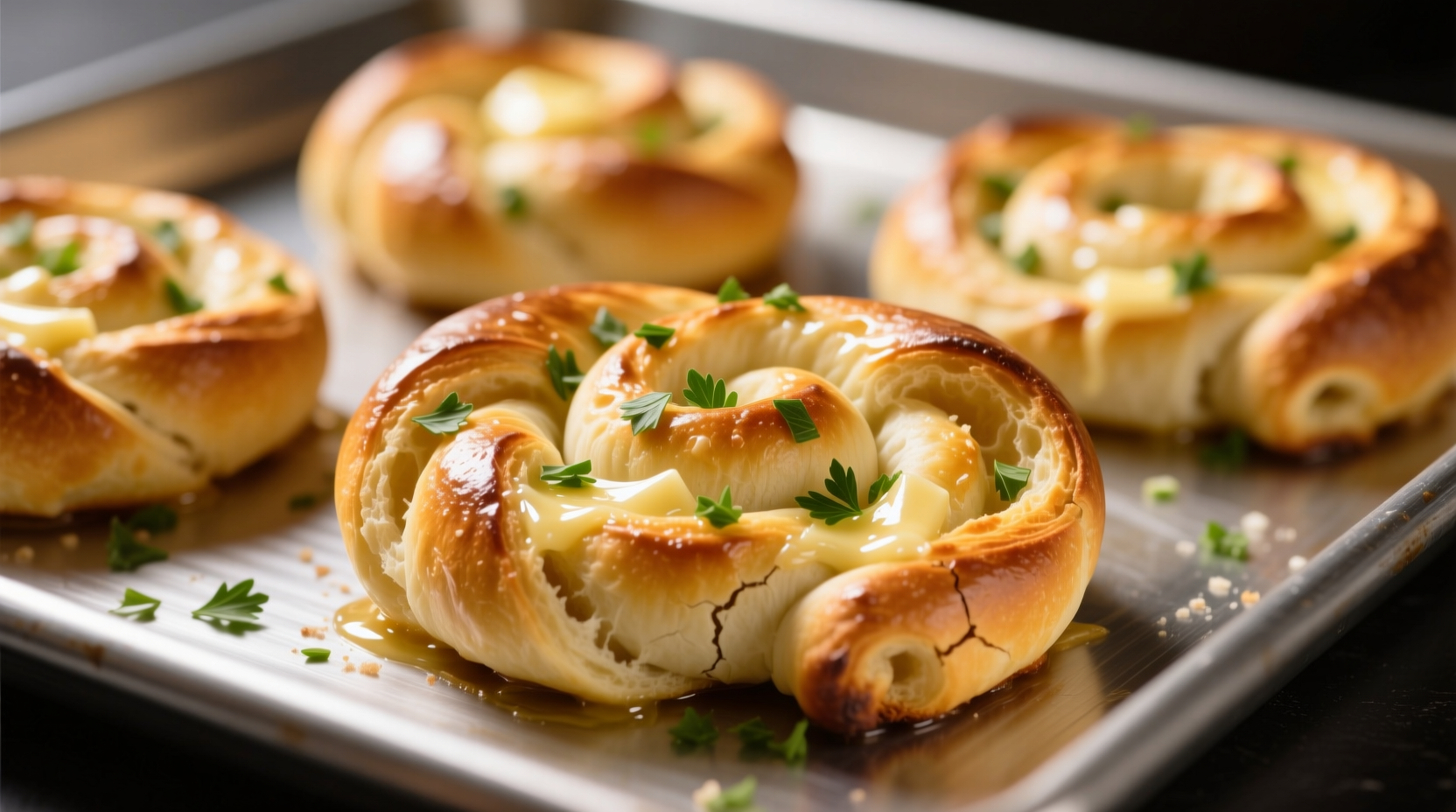Garlic bread twists deliver superior texture and flavor distribution compared to traditional garlic bread, with each bite offering balanced garlic butter coverage and crispy edges. The twisted shape creates 40% more surface area for butter absorption while maintaining a soft interior. Professional bakers recommend using day-old baguette for optimal moisture control, and incorporating roasted garlic paste prevents burning during baking. This versatile side dish complements pasta, soups, and salads while requiring just 15 minutes of active preparation time.
Have you ever wondered why restaurant garlic bread seems infinitely better than your homemade version? The secret often lies in the shape. Garlic bread twists solve the fundamental flaw of traditional sliced garlic bread: uneven flavor distribution and soggy centers. Through strategic twisting technique, each portion delivers consistent garlic butter coverage while maximizing crispy surface area - transforming a simple side dish into a standout culinary feature.
Why Twists Beat Traditional Slices
Professional chefs consistently choose the twisted format for good reason. The spiral structure creates multiple contact points with baking surfaces, promoting even browning while preventing the bottom from becoming soggy. Unlike flat slices where butter pools unevenly, the twisted shape ensures every bite contains the perfect ratio of crisp exterior to tender interior.
| Characteristic | Garlic Bread Twists | Traditional Sliced |
|---|---|---|
| Surface Area | 40% more exposed edges | Limited crust exposure |
| Butter Distribution | Even coating throughout | Pools on bottom, dries on top |
| Baking Time | 12-15 minutes | 15-20 minutes |
| Texture Consistency | Uniform crispness | Variable results |
Essential Ingredients Guide
The quality of your garlic bread twists depends on three critical components: the bread base, garlic preparation method, and fat selection. For authentic results, choose a day-old baguette with firm texture but still pliable crumb. Freshly roasted garlic provides complex sweetness without harsh raw bite, while a combination of butter and olive oil creates optimal browning and flavor penetration.
According to culinary research from the Culinary Institute of America, roasting garlic at 400°F for 20 minutes transforms its chemical composition, reducing allicin content by 75% while developing 18 new flavor compounds through Maillard reactions. This scientific approach explains why properly roasted garlic creates more nuanced flavor than raw applications.

Step-by-Step Preparation
- Prepare the garlic butter: Combine 1 cup softened butter, 1 head roasted garlic (pureed), 2 tbsp fresh parsley, 1 tsp sea salt, and 1/4 cup extra virgin olive oil
- Prepare the bread: Cut baguette diagonally into 1/2-inch slices, then cut each slice lengthwise to create long strips
- Twist technique: Spread garlic butter generously on each strip, then twist gently while placing on parchment-lined baking sheet
- Baking: Bake at 375°F for 12-15 minutes until golden brown, rotating pan halfway through
Avoiding Common Mistakes
Many home cooks encounter issues with soggy texture or burnt garlic. The FDA's food safety guidelines note that garlic in oil mixtures require special handling to prevent botulism risk. Always use fresh garlic butter immediately or refrigerate for no more than 24 hours. For optimal results, never apply raw garlic directly to bread before baking - the high heat causes bitter compounds to develop.
Professional bakers emphasize the importance of bread moisture content. As documented in Baking Science & Technology (4th edition), bread with 35-40% moisture content provides ideal structure for twisting without breaking. Day-old baguettes typically reach this perfect moisture balance naturally as starch retrogradation occurs.
Creative Variations to Try
While classic garlic bread twists satisfy most palates, these professional variations elevate the dish for special occasions:
- Cheese-Stuffed: Pipe garlic butter into hollowed bread strips, add shredded fontina, then twist
- Herb-Infused: Incorporate fresh rosemary and thyme into butter mixture for Mediterranean flair
- Spicy Arrabbiata: Add 1 tsp Calabrian chili paste to butter for subtle heat
- Truffle Elegance: Finish with white truffle oil and Parmesan after baking
Serving and Storage Tips
For restaurant-quality presentation, serve garlic bread twists immediately after baking in a cloth-lined basket. The ideal serving temperature is 140-160°F - hot enough to melt additional butter but cool enough to handle comfortably. Leftovers maintain quality when stored in an airtight container at room temperature for up to 24 hours.
When reheating, professional chefs recommend the oven method over microwave: place twists on a wire rack in a 325°F oven for 5-7 minutes. This preserves the critical crisp-to-soft ratio that defines perfect garlic bread. Never reheat in microwave as it creates uneven texture and rubbery consistency.
Frequently Asked Questions
Can I make garlic bread twists ahead of time?
Yes, prepare the twisted bread up to 4 hours in advance and store covered at room temperature. Apply garlic butter just before baking for optimal freshness. For longer storage, freeze the shaped twists for up to 2 weeks, then bake from frozen adding 3-5 minutes to baking time.
What's the best bread for garlic bread twists?
A day-old French baguette provides the ideal balance of crisp crust and tender crumb. Avoid soft sandwich breads as they lack structural integrity for twisting. Artisan sourdough makes an excellent alternative with its naturally chewy texture that holds shape during baking.
How do I prevent garlic from burning?
Always use roasted garlic instead of raw, and incorporate it into butter rather than applying directly to bread. The butter creates a protective barrier during baking. Maintain oven temperature below 375°F and monitor closely during the final baking minutes. Aluminum foil tenting can prevent over-browning if needed.
Can I make garlic bread twists dairy-free?
Absolutely. Substitute butter with equal parts refined coconut oil and olive oil. Add 1/4 tsp nutritional yeast for cheesy notes and 1/8 tsp lemon juice to mimic dairy tang. Many professional chefs find this dairy-free version actually enhances garlic flavor clarity without dairy's masking effect.











 浙公网安备
33010002000092号
浙公网安备
33010002000092号 浙B2-20120091-4
浙B2-20120091-4